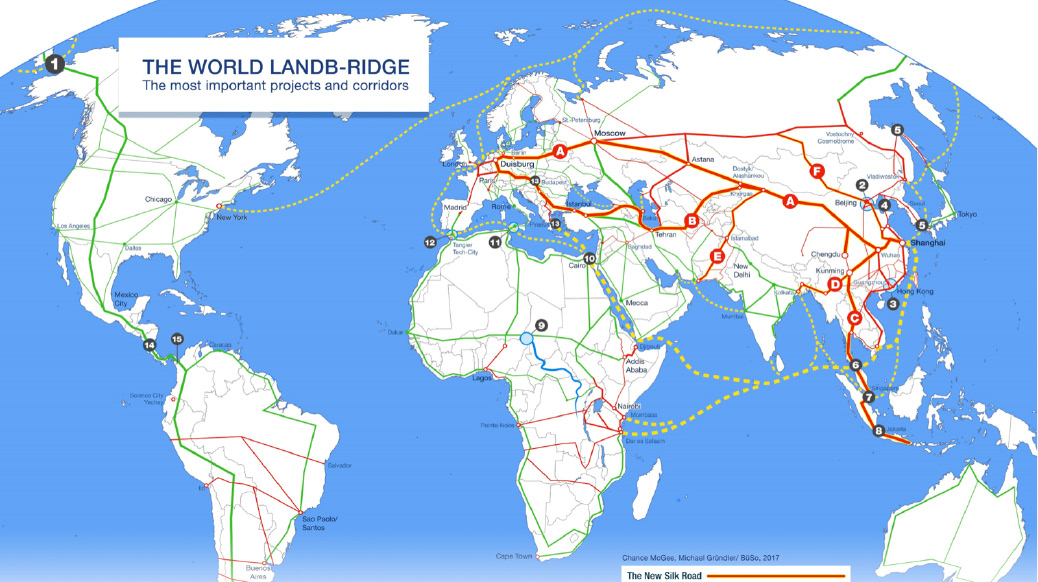Schiller Institute Conference
Fulfilling the Dream of Mankind
Frankfurt, Germany
November 25-26, 2017
Extending the New Silk Road to West Asia and Africa
by Hussein Askary, Southwest Asia Coordinator of the Schiller Institute
Hussein Askary is the Southwest Asia Coordinator of the Schiller Institute and is based in Stockholm, Sweden. This is an edited transcript of his address to the International Schiller Institute conference on “Fulfilling the Dream of Mankind,” Nov. 25, 2017, in Bad Soden/Taunus, Germany, which he presented under the title, “Extending the New Silk Road to West Asia and Africa: A Vision of an Economic Renaissance.” Subtitles have been added.
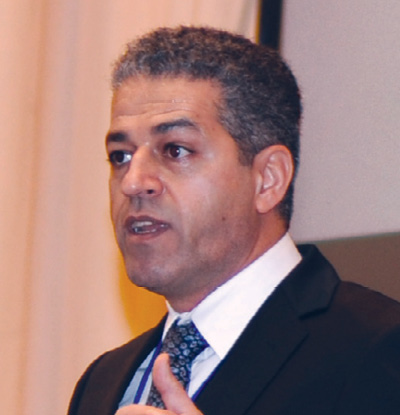
This report, with the same title as my presentation, which I co-authored with my colleague in the Schiller Institute, Jason Ross, was inspired by the ideas of Lyndon LaRouche and the incredible fight launched by Helga Zepp-LaRouche, the Schiller Institute, and the LaRouche movement worldwide over the past 25 years to make the dream of the New Silk Road a reality.
There is nothing unrealistic about what I am presenting here about Southwest Asia and Africa. The reason I am optimistic is that the new paradigm in international relations has taken hold, and the old imperial order is fading away. The other, more subjective reason for being optimistic is that we will continue fighting to make this happen.
The empire is still dangerously lurking, like a wounded tiger, and it might attack at any moment. However, the ideology of the empire and its axioms and beliefs about the relationship between man and nature, between man and man, and between nation and nation, will continue to be a source of danger to the human race. For example, the belief that money makes things happen. Or, the environmentalist idea that human activities to develop and raise the living standards of society always negatively affect nature and the environment, and that humans should, simply, be prevented from growing in numbers and in standards of living.
But through China’s constructive interventions, this is being pushed back, as we describe in detail in out report.
One very important point, which must be emphasized, always, is that neither I, nor the Schiller Institute, or for that matter China, is intending to impose on, or dictate policies to the African nations. What we are offering is friendly advice, lessons that other nations have learned the hard way, and of course certain universal scientific, cultural, and moral principles that apply to all human societies. African nations, and each one of them as an independent and sovereign nation, have to choose to join this development of their own will.
Now, Southwest Asia or West Asia, and Africa have been associated with wars, mass emigrations, famine, and epidemics. But this is about to change as the winds of the New Silk Road blow into the sails of the new paradigm, which is led by the BRICS nations, and China specifically.
In January 2016, Chinese President Xi Jinping visited three of Southwest Asia’s major countries—Egypt, Saudi Arabia, and Iran. Saudi Arabia and Iran were deeply involved on different sides of the war in Syria. One week before that visit, the Chinese Foreign Ministry issued the first ever China-Arab World Policy Paper, in which China’s contribution to the region is defined by extending the New Silk Road to this region and cooperating with these nations on large scale transport infrastructure projects, nuclear power, fighting desertification, and so on. China is offering the rest of the developing world all of its experience in development and poverty reduction. This is the first time a major power has opened its entire technological tool kit to other nations.
The Potential of the Region

Southwest Asia and the Horn of Africa, combined, has unique characteristics. This fantastic geographical location between Asia, Africa, and Europe has two-thirds of the world’s petroleum reserves, nearly $2 trillion in foreign currency reserves in the sovereign wealth funds of the Gulf states, and most importantly, about 400 million people, most of them below the age of 30. This region is very hungry for technology and investments in infrastructure, including transport, power, water, telecommunications. This is, in other words, potentially one of the greatest markets for capital goods on earth.
The governments of the region, themselves, realize now the importance of cooperation with the East to build their physical economies. Nations that are coming out of destructive wars, such as Syria and Iraq, and others that are still waiting to do so—Yemen and Afghanistan—will require enormous technological and logistical input to rebuild themselves.
Egypt, which is a natural bridge between the Mediterranean and the Indian Ocean, between Asia and Africa, is already positioning itself, to take the lead in this process, with the expansion of the Suez Canal and establishment of new industrial zones, and investing in transforming its transport networks to adapt them to the Belt and Road Initiative.
Through Egypt and the Maritime Silk Road, we arrive in Africa.
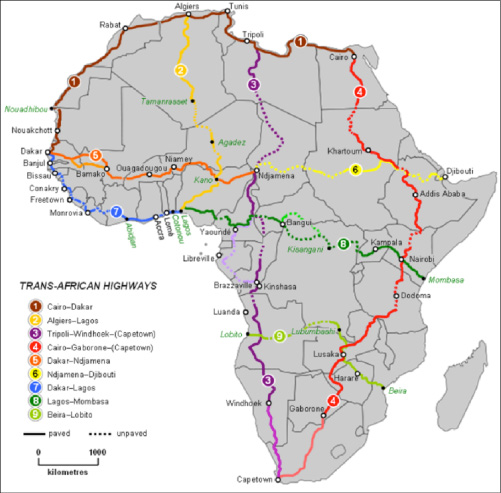
The African nations have had many real developmental plans since independence, such as the Lagos Plan of Action of 1980, which includes large-scale infrastructure projects to connect all countries, such as the Trans-African Highway. But none of these projects have seen the light of the day. The reasons are many, but they all point in the direction of the old paradigm of geopolitics, in which one nation or one tribe is pitted against the other, in order to take riches out of Africa and give nothing back except weapons, so that the guerrilla groups continue to protect the gold, diamond, and cobalt mines, and the oil fields. The typical attitude in Europe and the United States towards Africa is negative: Africa represents famine, poverty, epidemics, civil wars, dictatorship, and on and on. However, China’s attitude is that resolving all of these problems is a great opportunity, because the remedy exists and it has been applied in China itself, with incredible results.
China and the Industrialization of Africa
China in Africa now, according to a report issued earlier this year by McKinsey Consulting, is the No. 1 trade partner, the No. 1 infrastructure builder, the No. 1 in growth of foreign direct investment, the third in aid, and so forth.
This is the result of many years of a consistent Chinese policy, of technology transfer, win-win cooperation. Referring to China’s experience, President Xi Jinping said, at the December 2015 Summit of the Forum on China-Africa Cooperation (FOCAC) held in Johannesburg, South Africa, “Industrialization is an inevitable path to a country’s economic success. Within a short span of several decades, China has accomplished what took developed countries hundreds of years to accomplish and put in place a complete industrial system with an enormous production capacity.” Encouraging African leaders to pursue a path of industrialization, a call never heard from leaders of industrial nations in the West since the assassination of President John Kennedy, President Xi stated: “It is entirely possible for Africa, as the world’s most promising region in terms of development potential, to bring into play its advantages and achieve great success. . . . The achievement of inclusive and sustainable development in Africa hinges on industrialization, which holds the key to creating jobs, eradicating poverty, and improving people’s living standards.”

To give you a clear picture of the two different attitudes, I would like to present some data here:
China is not the No. 1 investor in Africa! No! It is No. 1 in the rate of increase of investment. It is the United States and Britain who are number one and two. However, take a look at what and where they are investing in comparison with China.
Of course, China’s positive involvement in Africa provoked a massive campaign of lies in Western media and think tanks, a large-scale brainwashing campaign based on lies which has affected many people’s attitude towards China, even among many Africans. I take one specific case study, a study of land-grabbing, because it makes people in Europe and the United States so emotional. Taking agricultural land from hungry Africans?
A Case Study

I am sure that every one of you has heard in some form or the other that China is moving millions of workers and farmers to Africa to grow food for Chinese markets. It looked like this in 2009, in the midst of a terrible global food crisis: “A million Chinese farmers have joined the rush to Africa, according to one estimate, underlining concerns that an unchecked ‘land grab’ not seen since the 19th century is under way.” This is from an article in the British Guardian.
What is outrageous about this article is that the so-called “estimates” the Guardian refers to, are supposed to be in a report issued by the International Fund for Agricultural Development and the UN Food and Agriculture Organization. So I read it. It mentions nothing about “a million Chinese farmers,” (!) and to the contrary, it asserts: “However, as yet, there are no known examples of Chinese land acquisitions in Africa in excess of 50,000 hectares where deals have been concluded and projects implemented. China’s ‘Friendship Farms’ in various African countries are formally owned by a Chinese parastatal organization, but are mostly medium scale, usually below 1,000 hectares.”
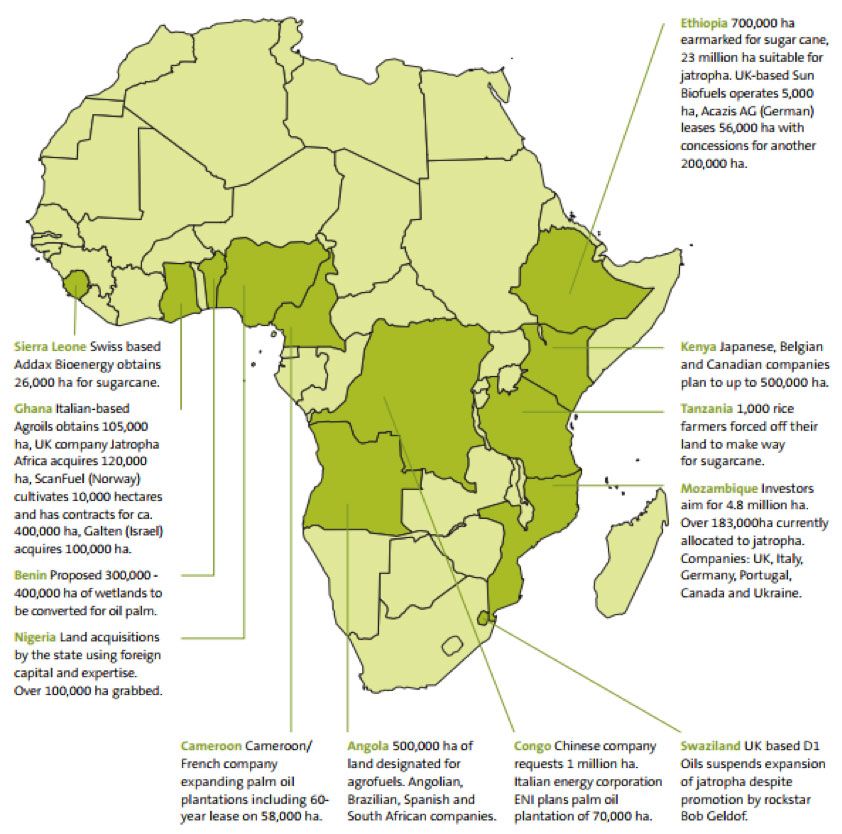
What we discovered from investigating this matter of land-grabbing, is that not China, but European companies, mostly British and Scandinavian, have been involved in grabbing large swaths of fertile and water-rich land in Africa to produce what? Food? No. They plant sugar cane and jatropha to produce ethanol and biodiesel for cars in Europe.
Investigations by the EU Parliament, investigative reporters, and environmental organizations such as Friends of Earth prove this point. Not only must the attitude towards Africa change, but the very prevalent way of looking at economic development must also change. As we pointed out in the speech of President Xi in the Johannesburg meeting of FOCAC, the new definition of sustainable development is industrialization.
Consistent with that new definition, mega-projects are back! And they are not built to glorify dictators, but to transform whole economies, nations, and even whole continents.
As my colleague Jason Ross put it: “Africa must leap ahead, not crawl slowly forward!” U.S. and European politicians have been proposing that developing nations should not “make the mistake” of rapid industrial development, and instead must crawl slowly, through appropriate technologies. Appropriate for Africans, why? Why not other technologies used in the United States and Europe, such as nuclear power? Why should Africans have a different kind of technology? What do you mean by appropriate?
No! The irony of the case of the development of Africa is that the deficit of basic infrastructure in Africa, as was the case in China, is an advantage, in that it allows nations to skip the intermediate stages of development that occurred over centuries in the industrialized countries, to leapfrog directly into the technologies that are at the frontier. This is the approach that China has taken, deploying high-speed rail and magnetically levitated trains, and fourth-generation nuclear fission technology, leaping ahead of the stagnating United States and Western Europe.
Recommendations



Our recommendations for the Southwest Asia region and Africa are:
• Establish a regional infrastructure development bank, similar to the Asian Infrastructure Investment Bank (AIIB). Simultaneously, each nation should have a national credit mechanism, a national development bank, to internally finance part of the infrastructure projects.
• Integrate the infrastructure networks through state-of-the-art, high-speed railway systems; build an integrated navigation system across the rivers and lakes of Africa; develop the full potential of the hydropower of the rivers; build fourth-generation nuclear power plants for power generation and desalination of seawater; and focus on the upper end of the value chains of the mining industry through petrochemical and metal industries, rather than relying on export of raw materials for income.
• Create a new “green revolution” in agriculture, similar to the Indian and Asian green revolutions, through developing new strains of higher yielding, disease- and drought-resistant crops. Reduce post-harvest wastage of agricultural products through better processing, preserving, and transporting of agricultural products.
• Focus on science and future-driven educational programs, with special focus on producing scientists, engineers, and a work force capable of handling frontier technologies such as nuclear, high-speed transport, and even space technologies.
Finally, a quick review of what mega-projects are underway in Africa, and what is still to be done.
Let’s look at development corridors. When we look at the New Silk Road or any other routes, we are not thinking simply in terms of trade—transporting an item from point A to point B. We regard these as development corridors that carry technology, materials, and manpower to open whole regions for physical economic development, including along the routes themselves.
We will use this map from the African Union’s Highway Network as a reference point, which is also the basis for the new standard gauge rail routes that China is building in Africa, and also the basis for the new High Speed Railway Network.
The most spectacular projects completed this year were the standard gauge railways in Ethiopia and Kenya. First, the Djibouti-Addis Ababa standard gauge line. This is part of the Ethiopian national rail plan to connect all parts of the country and neighboring countries. Ethiopia is building several industrial zones too, as part of its five-year national development plans.
The other railway is the Mombasa-Nairobi line. This is part of the East African Railway Master Plan. There are three major development corridors under construction in East Africa now: the LAMU, Northern, and Central corridors. These corridors will be integrated into the transcontinental corridors in Central and West Africa.
Another landmark achievement was China’s rebuilding in 2015 of the 1,344 km Benguela railway in Angola, practically taking away the British Empire and its old colonial tracks, replacing them with new standard gauge tracks.
In West Africa, several rail projects are underway along the Atlantic Coast of Nigeria, and to connect Lagos to Nigeria’s larger inland cities.
The first high-speed railway on the continent, in Morocco, is nearing completion. It is being built in cooperation with French companies.



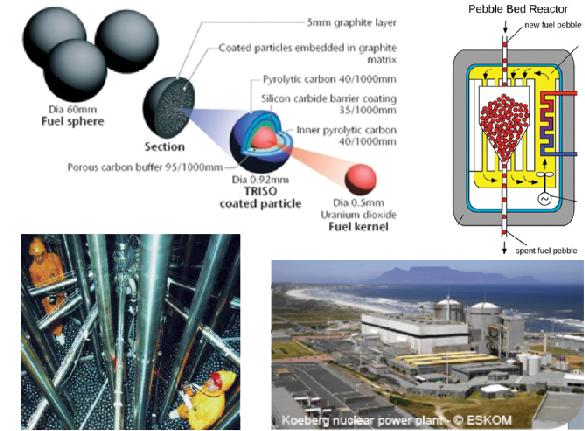
We propose that the following mega-projects are of highest priority:
• Transaqua
• The African Integrated High-Speed Railway Network
• A trans-African river navigation system
• The Grand Inga Dam
• South Africa’s High Temperature Nuclear Reactor Program
• The Gibraltar connection
• The Italy-Tunisia connection.
Conclusion
According to the UN, by 2050, the bulk of the world’s population growth will take place in Africa. Of the additional 2.4 billion people projected to be born between 2015 and 2050, 1.3 billion will be added in Africa. By 2030, Southwest Asia and Africa will have jointly contributed the greatest population growth (46.9% above 2015 levels) of all world regions, reaching 1.9 billion in 2030, with an amazing median age of only 23 years. Those who think this is a major problem belong to the old paradigm, while those who believe this is a great opportunity, belong to the new.
If we get things to work, we might see Africa evolve into the next decade into “a new Chinese miracle with African characteristics.” As Mr. Lyndon LaRouche has always emphasized: It is the future that determines the present, not the other way around. It is our vision of the future that defines our actions in the present. Thank you!




